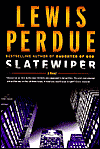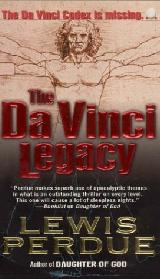A New Kind of Science - Book Review
 This review appeared in Barrons on September 2, 2002
This review appeared in Barrons on September 2, 2002The conventional wisdom in science is that complex systems and organisms can only be explained by equally complex rules and mathematics.
But regardless of whether one speaks of the behavior of stock markets and financial systems, sub-atomic particles, humans, apes or the very cosmos, scientists have developed enormously complicated mathematical models that fall short of anything other than "pretty good" most of the time -- and "pretty awful" whenever it comes to divining the inner workings of complexity.
Chaos theory, fractals, complexity theory and other promising paths have all managed to hit their own walls because, according to Stephen Wolfram in A New Kind of Science, simplicity is the prime mover of complex behavior -- and traditional math is the enemy of understanding this.
So instead of the conventional math and calculus of the past 300 years, Wolfram makes an excruciatingly thorough case that real portraits of complexity can be drawn only if one uses powerful computers to make billions and billions and billions of calculations -- in order to repeat very simple cellular automation rules.
To understand cellular automata, imagine a grid, like graph paper. Color in one square. Then to figure out which other squares to color in, apply this simple rule: a cell should be black whenever one or the other -- but not both -- of its neighbors on the same line were black on the step before.
After rule 90 (of 256) is carried out 50 or so times, an intricate, symmetrical pattern is produced. But after a few thousand iterations, the patterns appear to go completely random, producing pictographs with uncanny resemblances to leaf-vein structure, or crystal fractures, or animal ornamentation -- all phenomena which have been assumed to be results of very complicated processes.
The author proposes that the rules of cellular automata offer worthy answers to how we should approach the nature of the universe, the enigma of human consciousness and other lesser topics, like quantum physics and, finally, the ultimate fabric of reality: "All the wonders of our universe can in effect be captured by simple rules, yet this shows that there can be no way to know all the consequences of these rules, except in effect just to watch and see how they unfold."
In other words, things are a lot simpler than we thought -- but they can still be awfully unpredictable.
While some of the ideas expressed might be dismissed as the deranged babblings of a kook, or perhaps a genius with a frontal-lobe tumor, Wolfram comes with the pedigree of a visionary: He got his Ph.D. from Caltech at the age of 20, has a widely acknowledged career in particle physics and cosmology, found favor with such giants in physics as Richard Feynman and, as the writer of the much-admired Mathematica -- a program that aids scientists and mathematicians in making all manners of computations -- is a wildly successful software entrepreneur.
In the end, Wolfram's 1,197-page opus offers not a new kind of science but a new way of looking at science. True, many of the connections he makes are superficial or incoherent, but still intriguing. And this is a thought-provoking book with the heft of a cinder block -- making it the ultimate in heavy reading. It might even make for great vacation reading for some ... if you plan to take it along on all your vacations until 2005.



0 Comments:
Post a Comment
<< Home